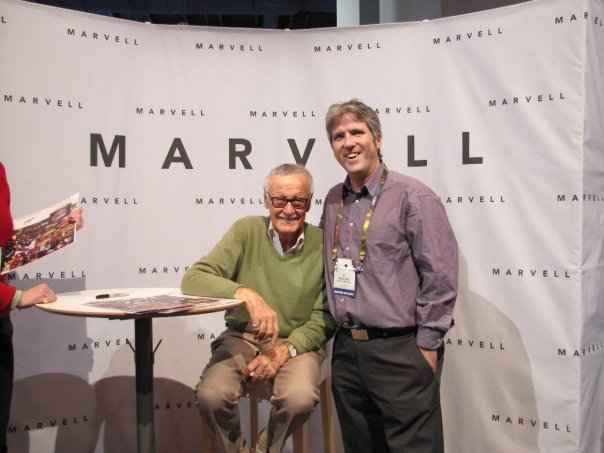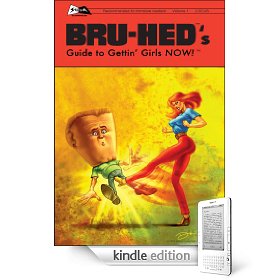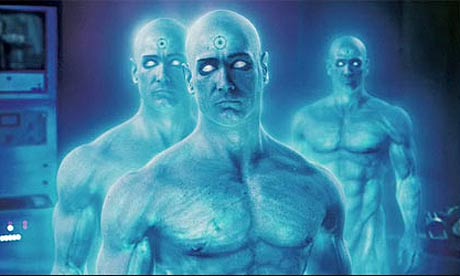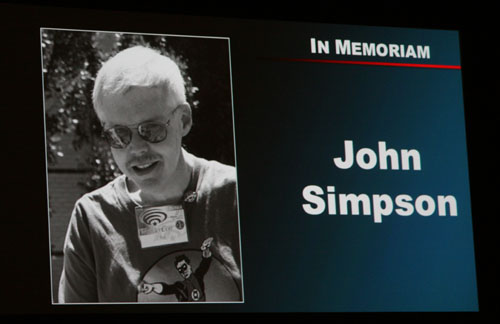(edited somewhat after the initial posting to play up brand preference–I had time to sleep on the original article)
As I write this, the Australian dollar is trading for about 93 cents against the US dollar, making my dream vacation in Australia a bit more expensive than it might have been otherwise. Since it’s a family vacation, we’ve been trying to use grocery stores instead of restaurants whenever possible. It leads to a lot of ham sandwich lunches, but it helps to keep the daily food bill out of the triple digits.
Australian food prices are a bit higher than American prices, as you might expect from an island country, but two things in particular have absolutely shocked me: $2.50 candy bars and $3.00 bottles of Coke ($2.50 for cans). And those are the big grocery store prices–convenience store prices for a simple Kit Kat bar can run as high as $3.69!
Now, anyone that knows me will testify that getting my daily supply of caffeine trumps all other nutritional values. Give me a couple of gallons of Diet Coke or coffee and I can survive anything, but take away my Diet Cokes and I practically break out in hives. So the idea of paying San Diego Comic-Con prices for Diet Cokes really got me wondering what the story was. And for that matter, what’s the cause for the the triple-price chocolate bars?
Well, let’s start with what it’s apparently not: It’s not a (huge) difference in taxes–everyone I’ve talked to denies the existence of some special tax on Milky Bars that doesn’t equally apply to (relatively cheap) potato chips. It’s also apparently not related to the cost of manufacture: big blocks of high quality Cadbury chocolate are available for about $4, but single-serving Bounty bars cost only a few cents less.
Finally, there’s not been a vast recent change of the exchange rate, and having looked in every candy store, convenience store, gas station, and grocery store between Brisbane and Sydney, I’m fairly certain it’s not just a case of Pete not knowing where to shop. According to the few Australian friends I’ve got left after bugging them about the price difference this past week, it’s not even a recent phenomenon–it’s been that way as long as anyone can remember.
So what’s the deal? My best guess is partial cartelization of the candy and soft drink market, coupled with brand preference from consumers blunting competitive price pressure. Simply put, a couple of candy makers (M&M/Mars, Nestle, and Cadbury seem to control the Australian candy bar market. (Hersheys failed in its attempt to enter the market). Similarly, PepsiCo and Coca Cola own the soft drink market down under. Other brands do actually exist (and, it turns out, at a tiny fraction of the cost) but they’re little known, little seen, and near-impossible to find in single-serving sizes at convenience stores.
The obvious question in any monopolistic scenario is, “If that’s true, how do they get away with it?” Not in the sense that Australia needs a National Snack Food Investigative Commission (although my small experience with Australia’s politics suggests that the current Labour government would be only too happy to convene one). No, the real question is why doesn’t some sharp young lad at the competing company simply undercut the overpriced leader and steal their market share?
A bit of that does seem to go on, but only around the edges–the occasional promo involving lesser-ranked brands such as “Buy a Coke for $4 and get any Cadbury bar for just $1!” The highest-ranked brands seem to be largely spared deep, permanent discounting.
This is similar to what Marvel and DC do with their comic prices. Comic books have undergone incredible inflation since the 1970s, and the current $3.99 cover price is more than triple the rate of inflation of those years. (A 35 cent comic book in 1977 should cost about $1.23 today if it kept pace with the overall rate of inflation).
Periodically, Marvel and DC have tried out cut-price titles (such as The Adventures of Spider-Man) and usually discontinue them quickly, citing them as commercial failures. It doesn’t help that the titles in question are usually promoted as “kids versions”, feature second-tier writing or artistic talent, and are usually not even part of the characters’ established continuity.
The real problem comes in the cruel ratio of sales to Cost of Goods Sold. Simplifying a bit overmuch, let’s say you’ve got a comic book that you can print for about $0.50 each and sell to a distributor for about $1.40 (leading to a street price of about $3.99). In theory, 10,000 copies sold gives a gross of $9,000 from which all your fixed costs are paid (writers, artists, marketing, shiny office building, etc.). Note that all the actual figures here are speculative: it’s the proportions that count.
Now let’s say you want to do a special comic line which you’ll sell for less in order to attract more readers. You drop the suggested retail price by a buck, and sell it to the distributor for $1.04 so it can be sold on the street for $2.99. In order to make the same gross, you now need to sell 66% more copies (16,667) in order to break even. Any less, and those extra readers came at a net loss.
A quick look around the net shows that the US price of Snickers
is about $30 for a 48-count box, so let’s guess that M&M/Mars manufactures them for something like 15 cents a bar, and sells them to distribution for twice that: 30 cents. (I’d welcome input from anyone with access to the actual figures). This leads to an individual U.S. candy bar sale price of around a dollar at retail.
Now, historically, the Australian market has proven it’s willing to tolerate retail prices of around $2.50-$3.50 for a single bar of Snickers. It seems that either M&M/Mars or the regional distributor (the candy is apparently made locally, not shipped from offshore) is able to realize relatively fat profit margins of more than double that of the U.S. market. But whether they’re taking the money to the bank, or paying it out in some expense I haven’t tumbled to in this incredibly superficial analysis, it would clearly be a monumental sacrifice to significantly cut the wholesale price in order to drive a markedly lower price at the checkout stand.
If your Cost of Goods Sold is 50%, cutting your end price by 25% means you have to sell twice as many units in order to make the same gross. And this is where brand preference becomes critical. A 1 cent reduction in the cost of some undifferentiated commodity like gasoline or hamburger meat would probably lead me to switch to the competing brand. When I’ve established an actual brand preference for a particular type of good, however, I require far greater incentives to make the switch. For instance, I like both Time Out and Nestle Crunch bars, but I like Nestle Crunch bars a bit more. It’d take a pretty good drop (10 cents? 25 cent? more?) for me to enter a store with a Crunch bar on my mind and walk out with a Time Out instead.
Similarly, a comic reader doesn’t want to read just any story about a super-powered dude in tights–they want Spider-Man or Batman or whatever their favorite character is (and given the number of Spider and Bat titles, they don’t want just any of those as wel)
As a practical matter, brand preferences on the part of consumers virtually guarantee that a price cutting move in order to gain profits through more customers will never be successful in the short term. The sharp young candy man who decides to cut the price of Snickers in the Australian division of M&M/Mars might succeed in taking over the market in time, but only if his boss doesn’t fire him in the intervening years–during which time the division’s profits will have certainly collapsed. Ditto the comic company executive that decides to start pricing flagship X-Men or Batman titles at $2 instead of $3.99. Consumers will buy more copies of their favorite heroes’ titles–but not so many more that it’ll come close to covering the revenue loss–or saving the job of the person who planned the move.
So if price cutting is so terrible for manufacturer’s profit margins, why does it ever happen? And instead of asking why Australian candy bars are so expensive, maybe we should be asking why American candy bars are so cheap?
No doubt there are economies at work in the U.S. market that aren’t available to the Australians, but in any market, the real reason is that competition leaves would-be-monopolists with no choice. One or two companies can make a (probably unspoken) agreement to not got at each other’s pricing too hard in order to protect the margins they’ve got, but if there’s a third (or fourth, fifth, or seventy third) rival in the marketplace, they may be quite willing to cut margins in exchange for a chance to break into the market.
And make no mistake-everyone‘s got competition. Even if there are only three major chocolate bar makers in Australia, and they’ve sort-of-agreed to price fix, they still have to compete against the things people eat in preference to their pricey chocolates. For instance, an Aussie which balks at $3.50 for a Time-Out bar might grab a package of Tim Tams or a bag of Salt & Vinegar potato chips. Not surprisingly, I was able to determine that Australia ranks below the U.S. in its per capita consumption of chocolate (unknown what percentage is chocolate bars) and I theorize–although it would cost me thousands to look at the industry report which would tell me if I’m right–that they make up for it in their consumption of the relatively cheap salty snacks category. (Or, I suppose, they could just have better diets all round…)
So it just may be that the first major entrants into the Australian chocolate bar market thought that $2.50-$3.50 was a pretty good price for a serving of their product, nobody domestic can afford to kill their own margins by cutting prices enough to overcome brand preference, and those consumer preferences solidified in a way that makes it incredibly expensive to enter the market, distribute nationally, and try to win a piece of the pie for yourself. Even Hershey apparently has decided that’s the case (although the latest word is that they may make a play to buy Cadbury)
And if so, the best recourse for consumers is to cut down on Mars Bars while in Australia, switch over to chips for your junk food needs, and for me to get used to the taste of Regal Cola instead of good old Diet Coke.





